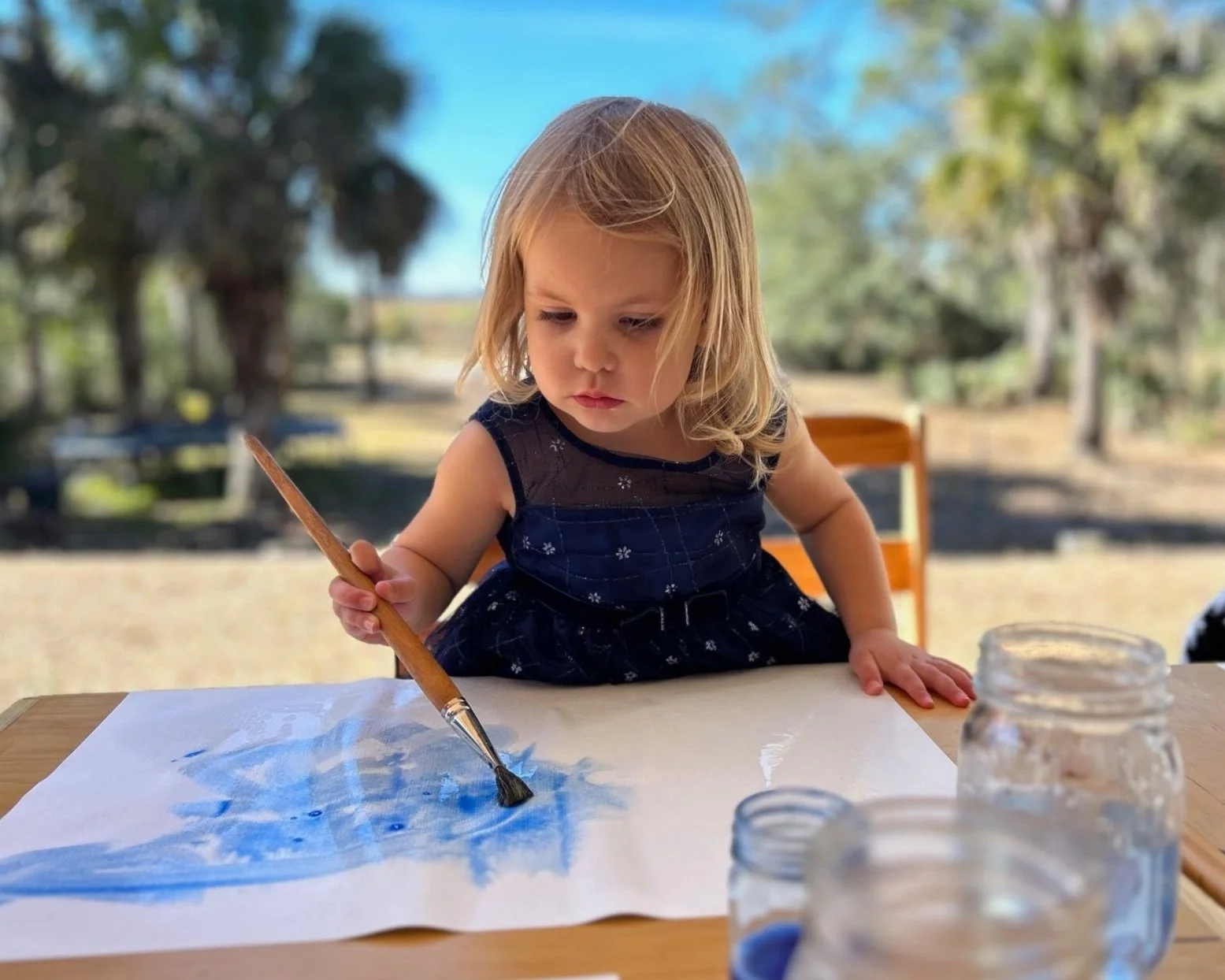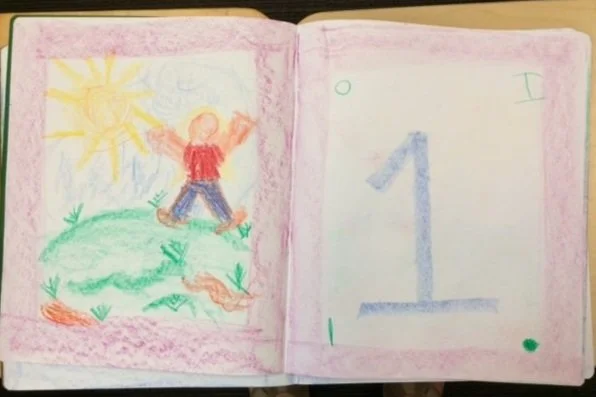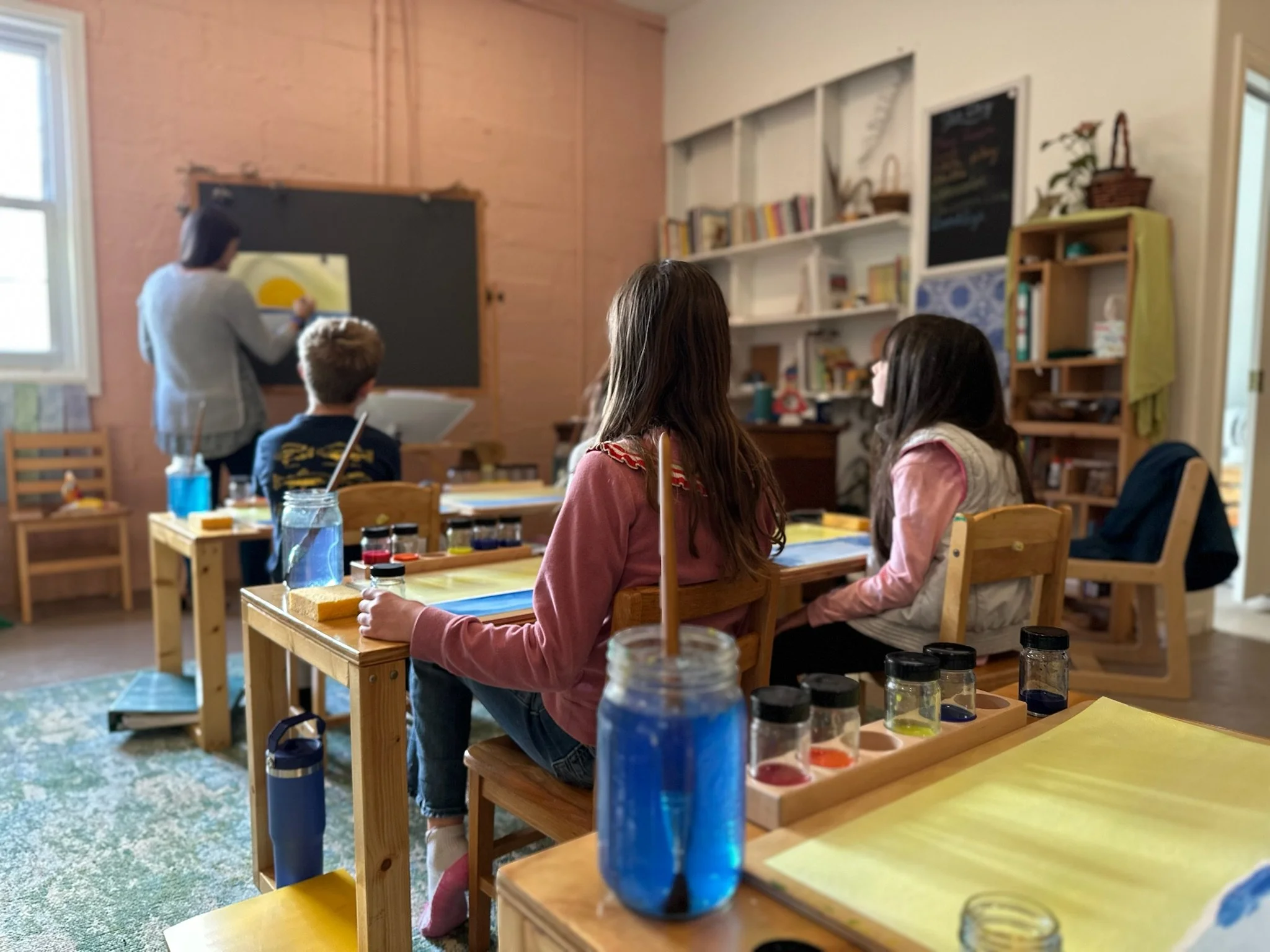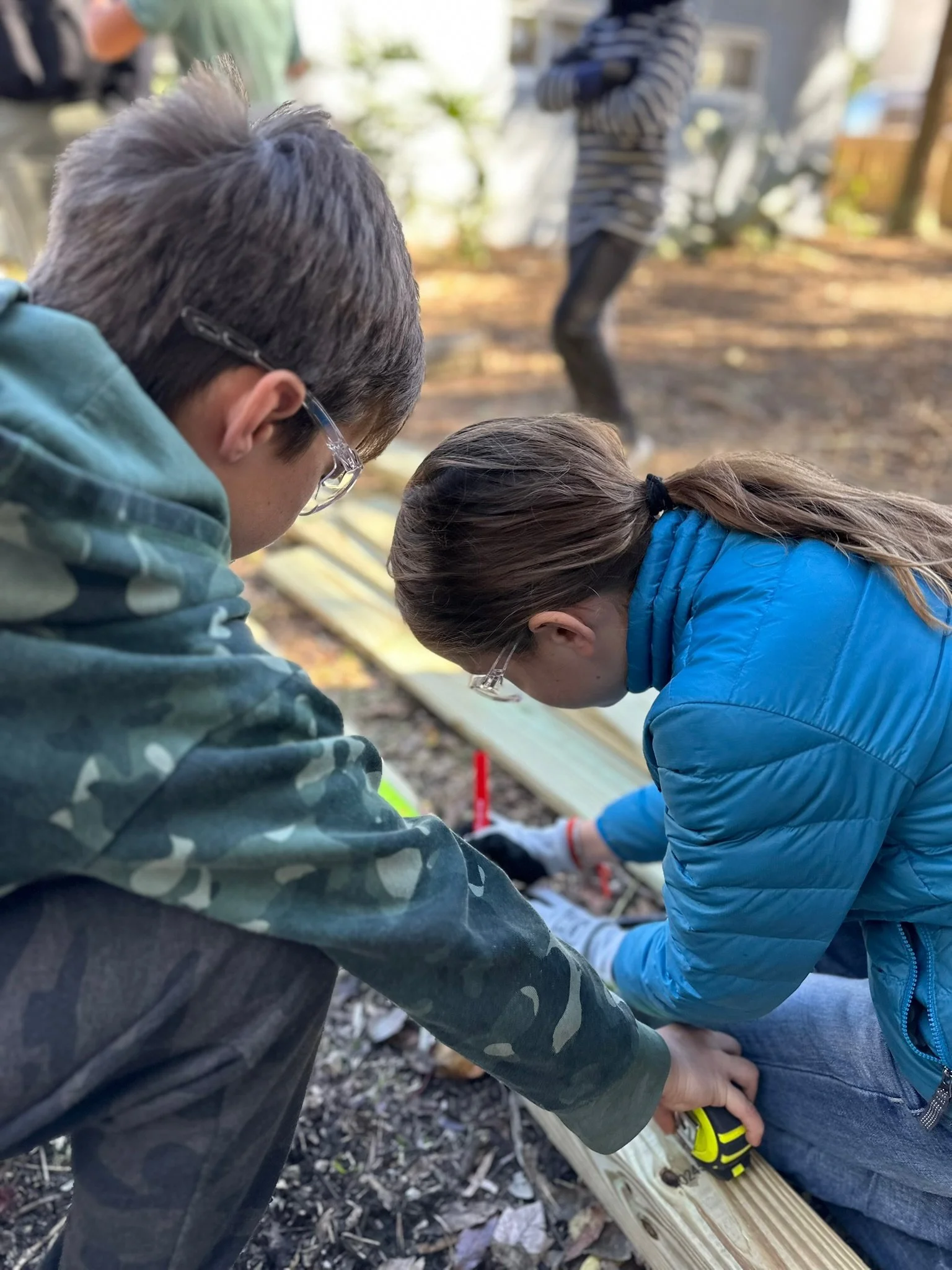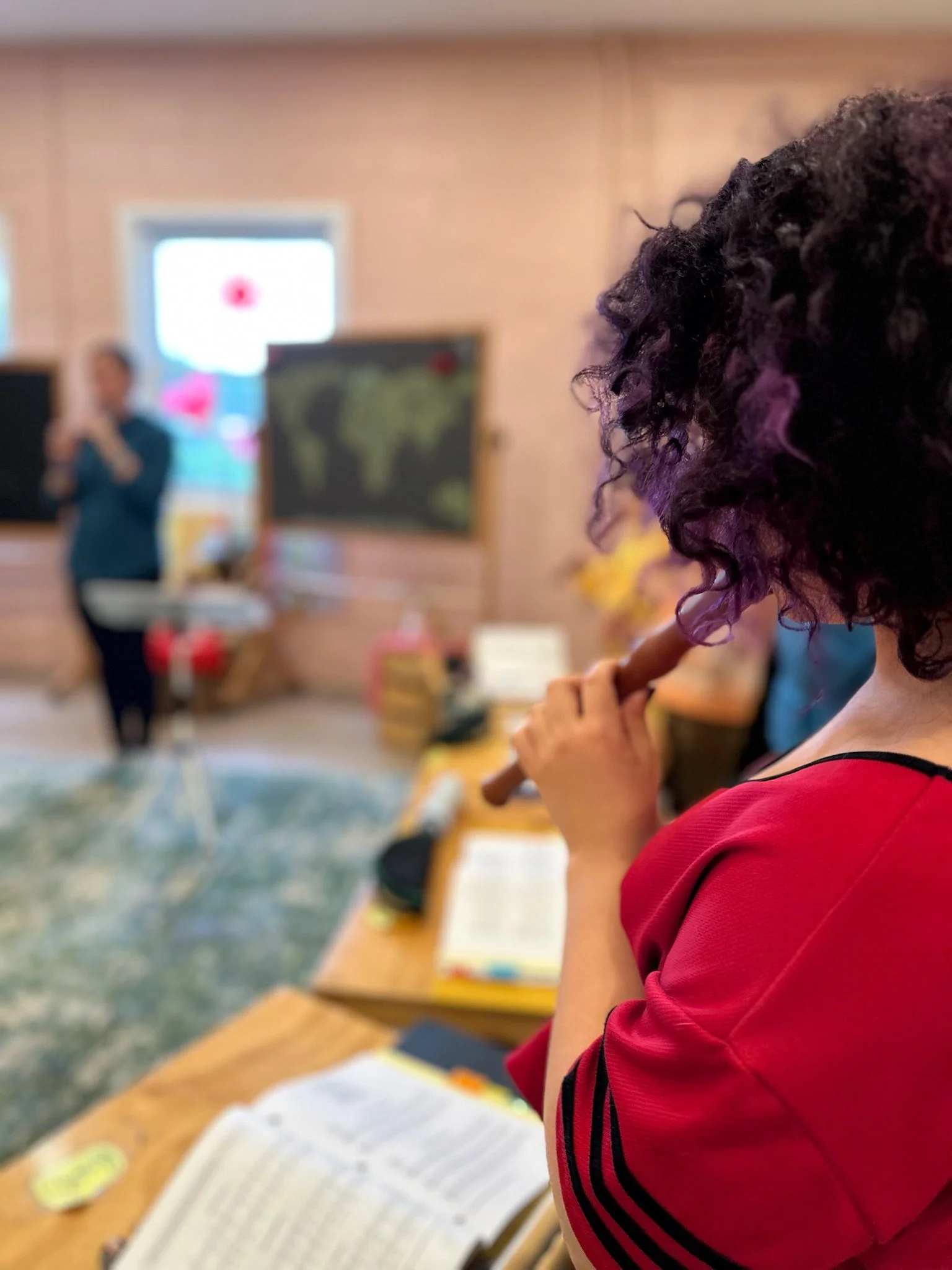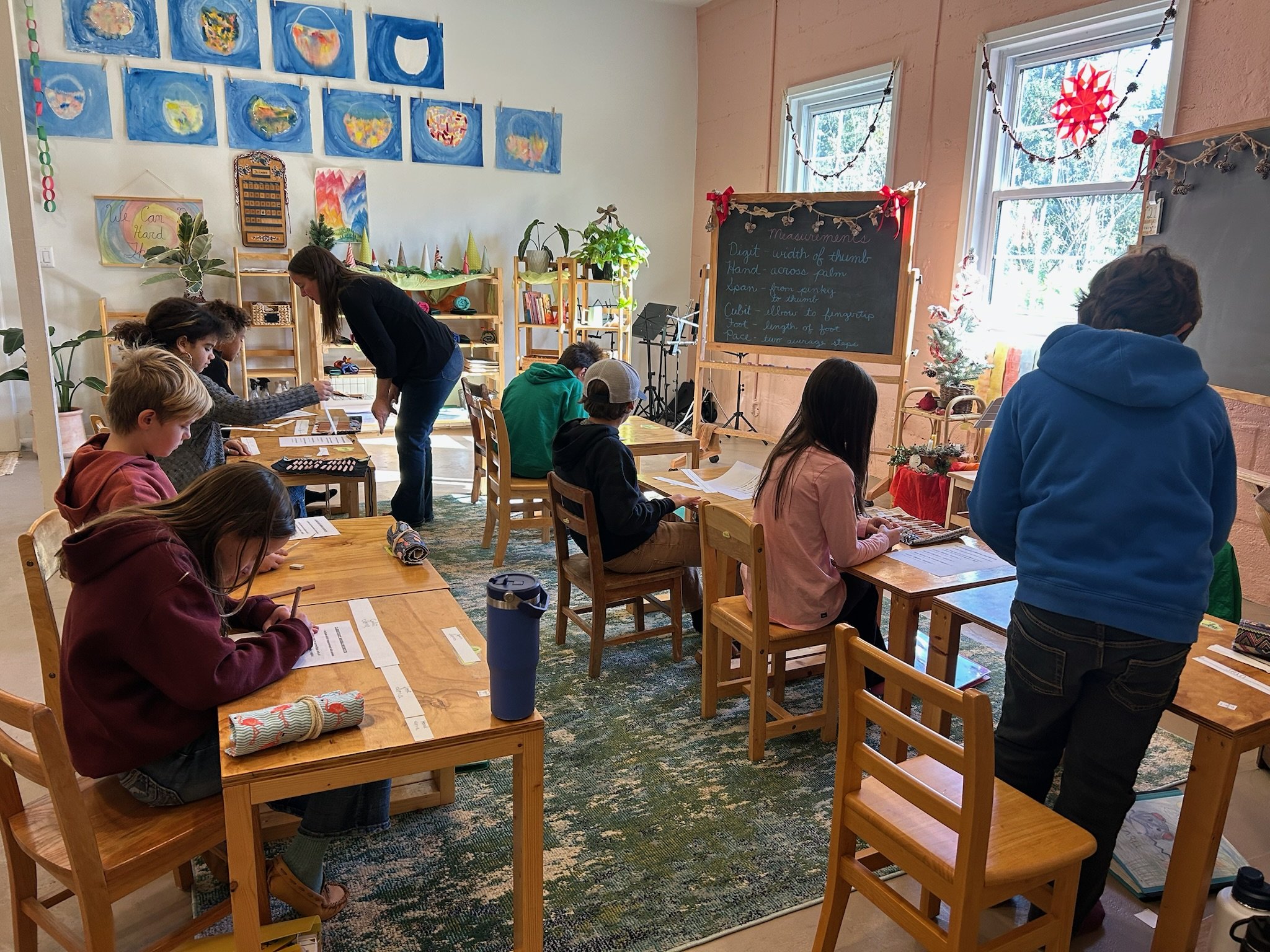
Parent Child Class (Ages 0-4)
Our Parent Child class takes place over 6 weeks per session, one day a week. We offer 90 minutes of structured baby and toddler-friendly hands-on lessons with songs, stories, circle time, and nature-based play. As a group we prepare and share in a plant-based snack for parent and child, as well as share information and discussions on child development and media-free Waldorf education. There is free time after each session of outdoor play and social time for parents to connect.
Kindergarten (Ages 4-6)
Tidewater offers a mixed age (4-6) Kindergarten community Monday, Wednesday and Thursday mornings. It allows our children to explore the natural rhythm of family life, while also enjoying the company of friends their age. Waldorf emphasizes the importance of protecting our children’s childhood and allowing them to flourish through their imagination and play. Our program includes imaginative play, baking, circle time with songs, poems and integrative movement, story time, art, and outside playing and exploring in nature.
1st Grade (Ages 6-7)
The first-grade year is focused on imagination, movement and integration. The day starts with "main lesson" which is a two-hour block of time that carries the rhythm and new material of the day. It usually starts with movement, songs, flute playing, integrative movement, and poetry. After the class has warmed to the day together in this rhythmic way then new academic material is introduced through imagination, applied with art and finished with a story.
The main lessons follow a unit theme that is developed and practiced over 4 weeks. In first grade the topics are language arts and math and the healing power of fairy tales. The teacher tells a fairy tale at the end of each lesson - which then is brought back into the lesson the following class by the students. These traditional fairy tales from around the world carry archetypal importance and are food for the children's imagination and soul. They are always the favorite part of the main lesson and a crucial part of developing literacy. The three-day rhythm establishes a habit for much of the learning in the years to come, as a story told the previous day, having been taken into the child’s sleep life, is recalled by the class then developed and explored in the days that follow in a multiplicity of ways such as drawing a picture from the story, writing-related text, or bringing it to life again through dramatization. This rhythm of learning encourages the feeling life of the child to take an active part in the act of remembering.
First Grade Main Lesson Book
In first grade, we do not use textbooks but rather through the leadership of the teacher the children create their own books that document all that they have learned. These reflect what they have learned in class and sow the seeds for the children to be active participants in the learning that will take place throughout the grade school years.
3rd/4th Grade (Ages 8-10)
In our combined 3rd/4th grade class all areas of our curriculum incorporate imagination, art, nature and movement. The day starts with "main lesson" which is a 2-hour block of time that carries the rhythm and new material of the day. We start each day with movement and song, recorder playing and poetry. Our day then brings new academic material (which is always brought through imagination and applied with art) and finished with a story. Following the main lesson there is lunchtime, outside play and one of our many extra lessons: handwork(knitting and crocheting), watercolor painting, music, sculpting, Spanish, woodwork, gardening and form drawing.
Third/fourth grade main lessons typically include stories of the ancient peoples, Native American legends, math and measurement, farming and gardening, and shelters and housebuilding. Third graders are interested in practical subjects and hands-on work. Our inspiration comes from real-life projects than from gnomes and fairies this year. This doesn’t mean that the third grader has any less of a need for engaging the feelings through stories. It’s just that they will connect more with stories of people making their homes on earth than they will to the invisible realm of the elementals.
The grade student’s feelings are engaged by a growing awareness of the need to survive. They’re engaged by the incredible resourcefulness of human beings, the power of individuals to do hard work and see the fruits of that labor, questions of free-will and authority, the ways people are able to control their environment (domesticating animals, planting seeds, making tools, developing skills, building shelters, inventing bread-baking, and so on), and all the ways that nature is out of our control (weather, the limits of climate, and the resources we have available).

